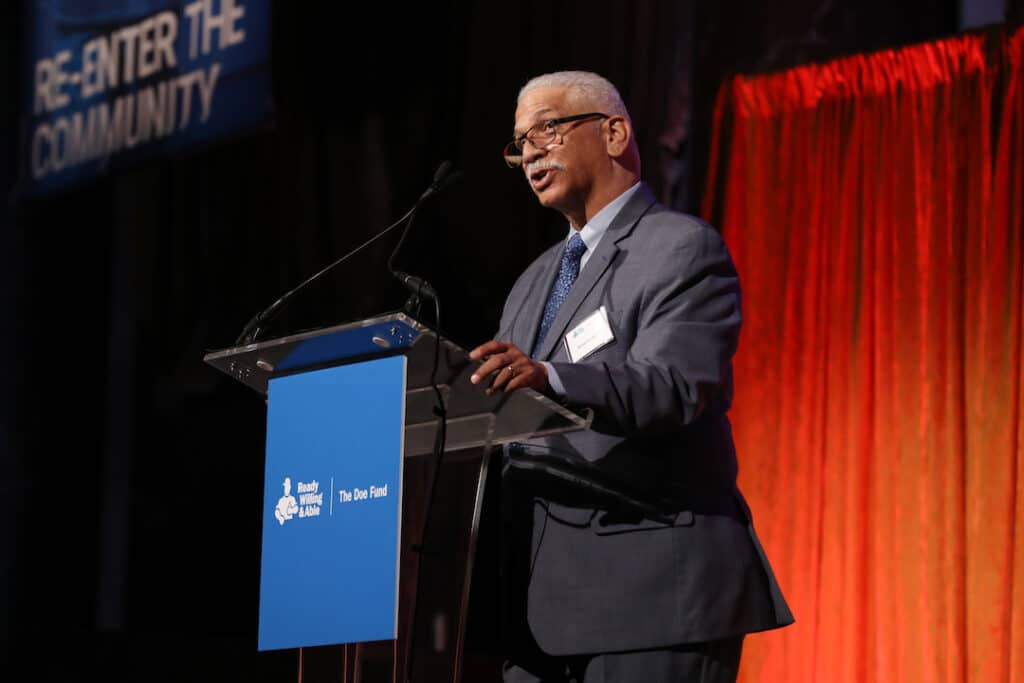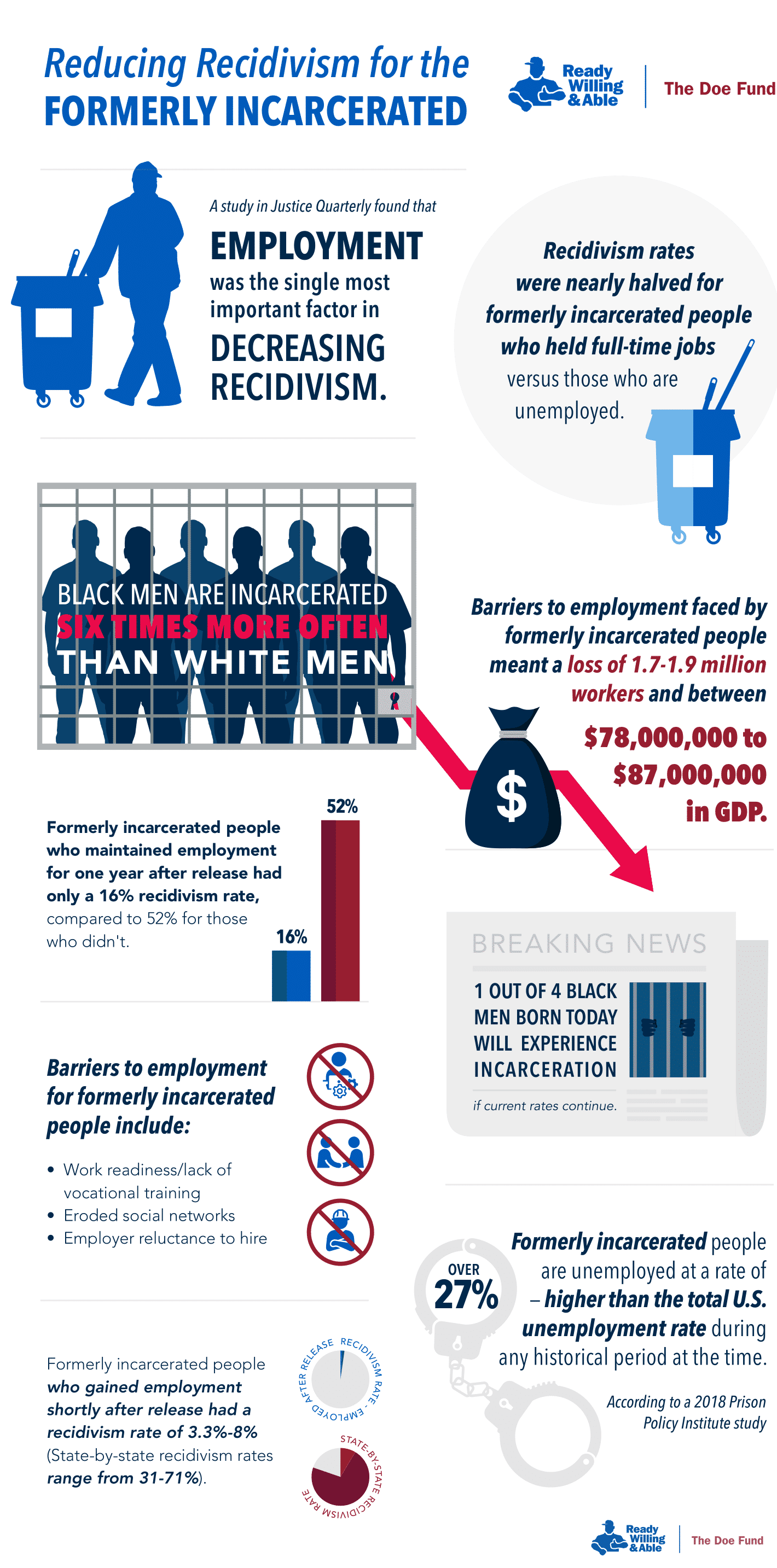Our Issues: Criminal Justice Reform

To end the failed policies of mass incarceration, criminal justice reforms must include community-based reentry solutions.
Much has been said on the urgent need to end mass incarceration, which disproportionately impacts poor people and people of color but does not reduce crime. With nearly 25% of the world’s incarcerated population, the United States imprisons its citizens more than any other country—from 200,000 in 1972 to 2.2 million today. Mass incarceration costs taxpayers $87 billion yearly, a 1000% increase from 1975.
Significant race and wealth disparities exist at every level of our criminal justice system. Black Americans comprise 48% of New York State’s prison population, despite only being 24% and 15% of the city and state population, respectively. Individuals with histories of incarceration have a 27% unemployment rate and are nearly 10 times more likely to experience homelessness than the general public. The un- and under-employment of people who have experienced incarceration leads to a loss of 1.7-1.9 million workers and between $78-$87 billion in GDP per year.
As a leader on the frontlines of this fight, The Doe Fund supports criminal justice reform to end mass incarceration. But criminal justice reform alone is not enough. It must also come with investments in community-based solutions that address the root causes of crime: poverty; lack of opportunity, education, and marketable skills; and mental health and substance abuse challenges. These factors are not mitigated by incarceration, which often merely exacerbates them. With 77% of Americans released from prison reentering the criminal justice system within five years, we know that incarceration simply does not work as a tool of rehabilitation.
To close the revolving door of mass incarceration and prevent formerly incarcerated people from reoffending, we must invest in reentry efforts that provide housing, supportive services and, most importantly, economic opportunity. The Doe Fund’s Ready, Willing & Able program is proven to do just that, reducing the chance of recidivism among graduates by more than half and providing a pathway to end intergenerational poverty. The Doe Fund also founded The Liberty Fund—New York City’s first and only charitable bail fund—which champions bail reform, connects clients to community-based support services, and recruits law firms to provide pro bono legal representation.
To further reduce recidivism, legislators must:
•Provide greater access to living wage jobs by supporting workforce development and reentry programs that reach marginalized communities.
•Expand and more strictly enforce fair-chance/ban-the-box hiring laws.
•Enact community hiring plans to provide economic opportunity to low-income minorities.
•Support efforts to reform parole that provide more community-based alternatives.
•Accelerate the closing of inhumane correctional facilities, as the New York City Council did with Rikers Island.
•Incentivize businesses to hire qualified job applicants who have experienced homelessness or incarceration. Corporate leaders must destigmatize hiring from these populations and cultivate them as employees.
•Ban background checks on housing applications to prevent widespread housing discrimination on the basis of arrest or criminal record.
•Repeal inequitable drug crime and sentencing laws, and expunge convictions for low-level drug offenses (as New York did in the Marijuana Regulation and Taxation Act).
•Dismantle the school-to-prison pipeline through upstream investment in marginalized communities, including in schools, affordable housing, healthcare, and infrastructure.
Over the last few years, meaningful criminal justice reforms have made New York State a leader in crime and prison population reductions. It’s time for New York to become a leader in reducing recidivism as well, by addressing the lack of opportunity that keeps the revolving door of mass incarceration open.




